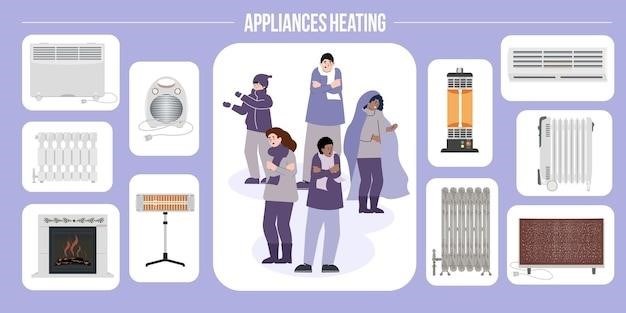Minolta SRT 101 Manual⁚ A Comprehensive Guide
This guide provides a complete resource for Minolta SRT 101 users․ Explore various online resources to download the manual, understand different versions, and learn about the camera’s features․ Troubleshoot issues with repair manuals and delve into detailed camera specifications, accessories, and compatible lenses․ Discover additional support and online communities for further assistance․
Where to Find the Minolta SRT 101 Manual
Securing a Minolta SRT 101 manual can be achieved through several avenues․ Online resources are your primary starting point․ Many websites specialize in archiving camera manuals, offering free downloads in PDF format․ Search engines like Google, Bing, or DuckDuckGo are effective tools, using keywords such as “Minolta SRT 101 manual PDF download․” Remember to carefully examine websites for trustworthiness and avoid suspicious links․ Additionally, forums dedicated to photography and vintage cameras are invaluable; users often share links to manuals or offer advice on locating them․ Check out online marketplaces like eBay; occasionally, sellers include the manual with the camera or sell it separately․ Camera repair shops, while primarily focusing on repairs, may also have access to manuals or know where to find them․ Don’t neglect checking your local library’s resources; some libraries maintain extensive collections of technical manuals․ Finally, consider contacting Minolta directly (if they still offer support) or contacting other camera manufacturers, as they might have resources or links to archived manuals․

Downloading the Minolta SRT 101 Manual⁚ Online Resources
Numerous online platforms host Minolta SRT 101 manuals, offering convenient digital access․ Websites specializing in camera manuals, such as ManualsLib or similar archives, are excellent starting points․ These sites often categorize manuals by brand and model, simplifying your search; Remember to verify the website’s legitimacy before downloading any files to protect your device from malware․ Utilizing search engines with specific keywords like “Minolta SRT 101 manual PDF free download” can yield direct links to downloadable files․ However, exercise caution; not all sources are reliable, and some may offer outdated or inaccurate versions․ Online forums and communities dedicated to photography and vintage cameras are also useful․ Members frequently share links to reputable manual sources or provide assistance in locating them․ Be mindful of file sizes; larger files may indicate a higher-quality scan but take longer to download․ Always scan downloaded files with antivirus software before opening them, particularly if the source is unfamiliar․ Finally, consider utilizing a dedicated PDF reader to ensure optimal viewing and printing of the downloaded manual․ A well-organized digital library can help you easily access and manage your collection of camera manuals․
Minolta SRT 101 Manual⁚ Variations and Versions
While the core functionality of the Minolta SRT 101 remained consistent, subtle variations exist across different production runs and regional releases․ These differences might manifest in minor cosmetic details, such as the camera’s finish or the lettering on the dials․ More significantly, some versions might incorporate updated internal components or minor improvements to the metering system․ The manual itself may reflect these variations, with slight changes in diagrams or explanations of specific features․ Therefore, when searching for a manual, specifying the exact model number (e․g․, SRT-101, SRT 101x) is crucial to ensure compatibility․ The year of manufacture can also be a useful identifier, as later models may have revisions not reflected in earlier manuals․ Furthermore, language variations are common; manuals may exist in multiple languages to cater to diverse markets․ Finding a manual in your preferred language might require more extensive searching․ Some manuals may cover a range of similar Minolta models (like the SRT 100, 102, or others in the SR-T series), but be aware that not all features and specifications might be identical․ Always carefully examine the manual’s table of contents or introductory pages to confirm its precise applicability to your specific Minolta SRT 101 camera version․ Paying attention to these details helps ensure you’re using the most relevant and accurate instructional guide for your particular camera․
Understanding the Minolta SRT 101’s Features
The Minolta SRT 101, a 35mm single-lens reflex (SLR) camera, boasts a through-the-lens (TTL) metering system for accurate exposure readings․ This system, often highlighted in manuals, measures light directly through the lens, providing a more precise exposure assessment compared to other metering methods․ The manual will guide you through the camera’s controls, including shutter speed and aperture adjustments, allowing for creative control over depth of field and motion blur․ Understanding the interplay between these settings is key to mastering photography with the SRT 101․ Many manuals emphasize the camera’s ease of use, particularly its intuitive design for quick and efficient operation․ Features like the light meter’s needle display and the clear markings on the dials contribute to a user-friendly experience․ The manual will also explain the use of various accessories, such as external flash units and different lenses, broadening the camera’s photographic capabilities․ Mastering the SRT 101’s features unlocks its potential for high-quality images․ The manual serves as the essential guide to understanding its functionalities, enabling you to capture sharp, well-exposed photographs․ Properly utilizing the TTL metering system, adjusting shutter speeds and apertures, and understanding accessory compatibility are all key aspects covered in detail within the comprehensive manual․
Minolta SRT 101⁚ Troubleshooting and Repair Manuals
While the standard Minolta SRT 101 manual covers basic operation and features, dedicated troubleshooting and repair manuals provide in-depth guidance for resolving more complex issues․ These specialized manuals, often available online or from camera repair specialists, offer detailed diagrams, schematics, and step-by-step instructions for diagnosing and fixing mechanical and electrical problems․ Finding a service manual might require some online searching; sites specializing in vintage camera manuals are a good starting point․ These resources are invaluable for addressing malfunctions like light meter inaccuracies, shutter speed inconsistencies, or issues with the film advance mechanism․ Repair manuals frequently include parts lists, enabling you to source replacement components if necessary․ Remember that working on delicate camera mechanisms requires patience and technical skill․ If you’re uncomfortable performing repairs yourself, seeking professional help from a qualified camera technician is always advisable․ Attempting repairs without proper knowledge can potentially cause further damage․ The availability of both user and professional repair manuals highlights the enduring appeal of the Minolta SRT 101, with resources available to support users for years to come․ Always prioritize safety and consult expert advice when undertaking complex repairs․
Minolta SRT 101⁚ Camera Specifications and Details
The Minolta SRT 101 is a 35mm single-lens reflex (SLR) camera renowned for its robust build and reliable performance․ Key specifications often include a through-the-lens (TTL) metering system, providing accurate exposure readings․ The camera typically uses a metering system which reads light through the lens, ensuring accurate exposure readings․ The shutter mechanism is typically a vertical-travel cloth focal-plane shutter, offering a range of speeds․ Film advance is typically manual, and the camera usually features a hot shoe for flash attachments․ Focusing is achieved manually, via the lens․ The body is typically constructed from sturdy metal, contributing to its durability․ While precise specifications can vary slightly depending on the specific version or model (some sources mention variations like the SRT-101b), these core features define the camera’s functionality․ The SRT 101 is often praised for its intuitive design and ease of use, making it a popular choice for both amateur and professional photographers․ Understanding these specifications is crucial for selecting appropriate lenses and accessories, and for optimizing your photographic workflow with this classic camera․ Many online resources provide detailed specifications and comparisons with similar models․
Minolta SRT 101 Accessories and Lenses

The Minolta SRT 101’s versatility is enhanced by a wide range of compatible accessories and lenses․ The camera’s most common accessory is likely a flash unit, often attached via the hot shoe․ Various flash models, offering different power levels and features, were available․ Other accessories could include lens hoods, protecting the lens from stray light and enhancing image quality․ Additionally, carrying cases or bags were commonly used to protect the camera during transport․ A remote shutter release might have also been used for certain photography situations․ The Minolta SRT 101 used the Minolta MC/MD lens mount, meaning a vast selection of lenses is available․ These lenses ranged from wide-angle to telephoto, allowing for varied photographic styles and subjects․ Macro lenses for close-up photography and special-purpose lenses were also available․ Finding information on compatible lenses and accessories may require exploring online resources and forums dedicated to classic Minolta cameras․ Understanding the compatibility of lenses and accessories is essential for maximizing the potential of the Minolta SRT 101․
Additional Resources and Communities
Beyond the official Minolta SRT 101 manual, numerous online resources and communities offer valuable support and information․ Websites dedicated to classic camera repair and photography often feature forums where users share tips, troubleshoot problems, and discuss various aspects of the camera․ These online communities can be invaluable for finding answers to specific questions or resolving unexpected technical issues․ You might find detailed repair guides, lens reviews, and discussions on accessories, helping you to get the most out of your SRT 101․ Searching online using terms like “Minolta SRT 101 forum” or “Minolta SRT 101 repair” can lead you to these helpful communities․ Remember to be cautious about the reliability of information found online and to cross-reference information from multiple sources when undertaking repairs or significant modifications․ Participating in these communities allows you to connect with other enthusiasts, share your experiences, and learn from the collective knowledge of experienced Minolta SRT 101 users․ This collaborative approach can significantly enhance your overall experience with this classic camera․





















